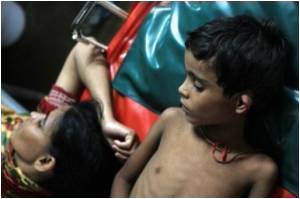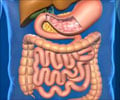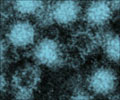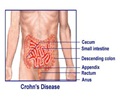
The research, by Griffith University's Institute for Glycomics in collaboration with the University of Melbourne, is being described as 'the next piece of the puzzle' in understanding the key carbohydrate receptors for rotavirus recognition.
Using an advanced spectroscopic technique, the study has involved mapping the interactions between a common carbohydrate that lines human cells and the whole virus.
'These carbohydrates are essential for rotavirus to recognise human cells and the latest outcomes will speed up the development of relevant therapies to combat the virus,' said Institute director Professor Mark von Itzstein.
He said the new research, published in world-leading scientific journal Angewandte Chemie, 'demonstrates how the carbohydrates which are present on human cells interact with the rotavirus particle and serve as an initiation signal for infection and establishment of disease.
'To develop new anti-viral drugs, we must first understand how the virus binds and infiltrates cells in the human body,' said Professor von Itzstein.
'These carbohydrates are essential for rotavirus to recognise human cells and the latest outcomes will speed up the development of relevant therapies to combat the virus,' said Institute director Professor Mark von Itzstein.
Advertisement
'This discovery will advance research in the design and synthesis of new drugs that may stop infection by rotavirus, by exploiting these recognition elements of the virus,' said Professor von Itzstein.
Advertisement
Rotavirus infection is estimated to be responsible for 33 per cent of all hospitalisations, including 10,000 per annum in Australia, due to rotavirus- induced diarrhoea.
Source-Medindia














